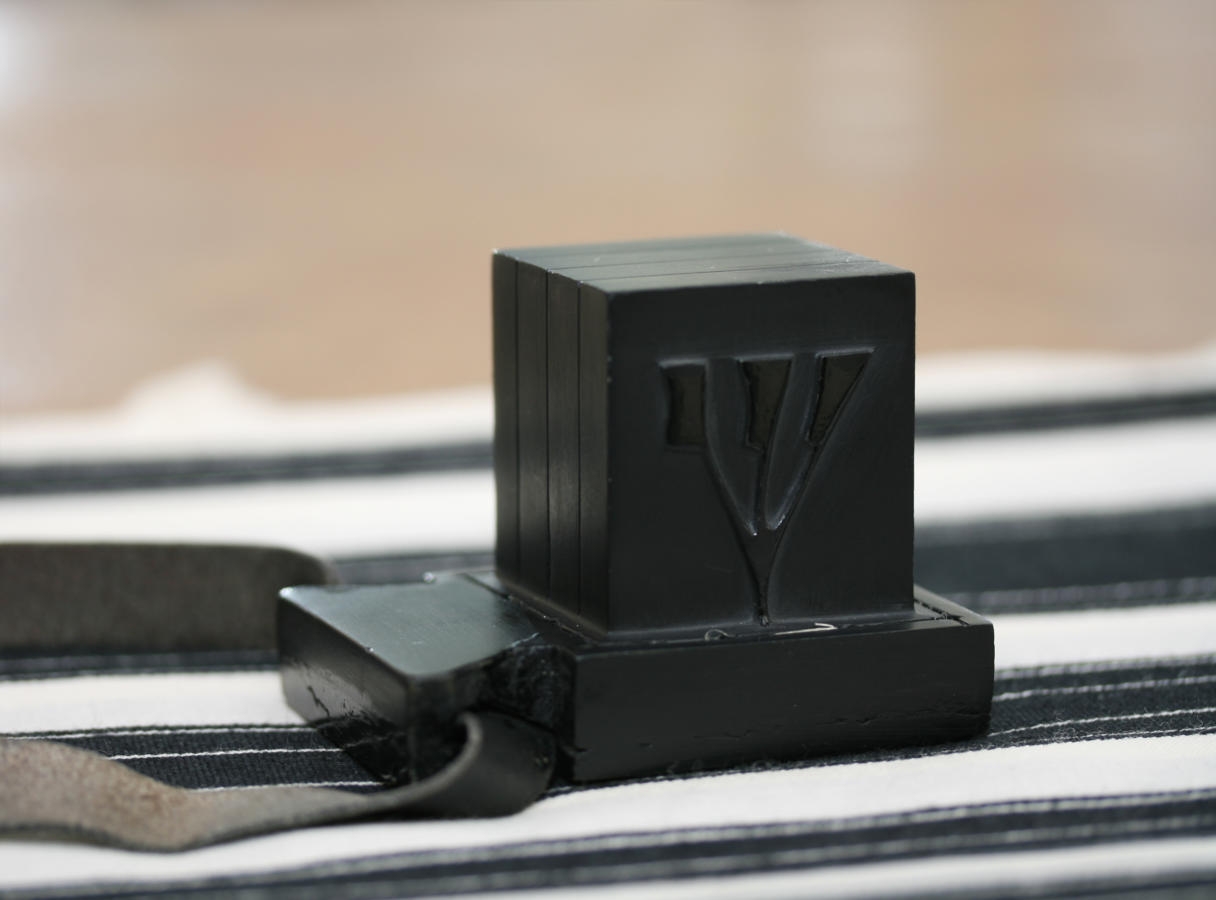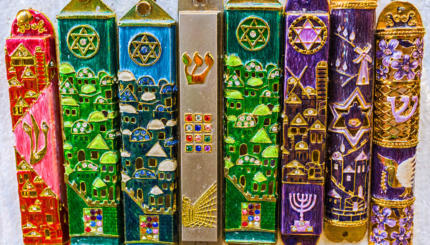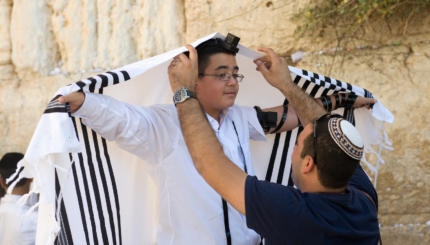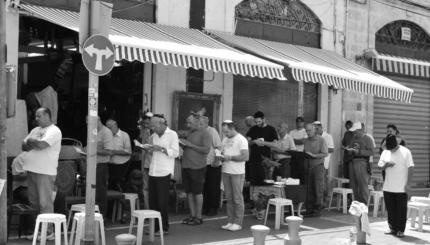Question: I am looking into purchasing a pair of tefillin for myself. I’ve noticed there’s a big range in price but I am confused about what makes different sets of tefillin “better” or “worse.” Can you give me a guide for buying tefillin?
–James, Pensacola
Answer: You know the old saying, “Time is money”? That pretty much explains the price differences when it comes to tefillin. The more time and energy that goes into producing them, the higher the price tag.
Tefillin Components: Boxes, Straps, Parchment
Tefillin are made of two leather straps and two black leather boxes. One is for the arm, and the other is worn on the head. Inside the black boxes (called batim, which means houses) are strips of parchment with four passages from the Torah written by a specially trained scribe. The four passages are: Exodus 13:1-10; Exodus 13:11-16; Deuteronomy 6:4-9; Deuteronomy 11:12-21. The arm tefillin contains all four sections written on a single strip of parchment. In the head tefillin there are four separate compartments, one for each of the four. To be kosher, the letters on the parchment need to be whole and distinct. If ink has flaked off, and the letters are broken, or run into each other, the tefillin are not kosher.
Varying Levels of Quality
The quality of the writing on the parchment is the biggest price factor in a set of tefillin. I asked Jen Taylor Friedman, a scribe who blogs at Hatam Soferet, about this, and she wrote, “Small writing is hard to do well, so a good set of tefillin parchments takes a lot of time and effort to produce, which makes good parchments expensive. Cheap tefillin have been written faster. Often, they’ve been scribbled such that the letters are barely kosher [acceptable according to Jewish law]. ‘No-one will see,’ the harried scribe thinks. ‘What’s it matter if they’re a bit iffy?’ and iffy they are. Also, the cheapest tefillin are written on parchment which has been treated to make it easier to scribble on — but the treatment hastens the decay of the letters. So even if you’re lucky and the letters are just about kosher, they’re going to decay in ten years. This is why it is possible to buy very cheap tefillin, and why it is not the best decision.”
With your help, My Jewish Learning can provide endless opportunities for learning, connection and discovery.
Other Factors: Fonts and Boxes
There are two other factors you want to consider when choosing tefillin:
Fonts: Beit Yosef, Arizal and Vellish
There are three different scripts, or fonts, used in writing tefillin: Beit Yosef, Arizal and Vellish. Beit Yosef is the same script that Torahs are written in. Arizal script is only slightly different from Beit Yosef, and is the preferred script of the Hasidic community. Vellish script is bolder, and is used by those of Sephardic descent. Ask about what script is in the tefillin you’re looking at, and consider going with the script that corresponds to your heritage.
Boxes: Glued vs. Molded Leather
The leather boxes can be made a few different ways. The best and most difficult way is to mold one piece of leather into a box shape, but they can also be made by just cutting and gluing leather into a box shape. Molded leather, of course, is more expensive, and sturdier. When looking at tefillin you’ll want to ask what method was used for your boxes.
Jen suggests spending about $600 on tefillin. It’s a big chunk of change, but for that price you’ll get very high quality tefillin that will be kosher for at least 50 years.
Hasidic
Pronounced: khah-SID-ik, Origin: Hebrew, a stream within ultra-Orthodox Judaism that grew out of an 18th-century mystical revival movement.
kosher
Pronounced: KOH-sher, Origin: Hebrew, adhering to kashrut, the traditional Jewish dietary laws.
Sephardic
Pronounced: seh-FAR-dik, Origin: Hebrew, describing Jews descending from the Jews of Spain.
tefillin
Pronounced: tuh-FILL-in (short i in both fill and in), Origin: Hebrew, phylacteries. These are the small boxes containing the words of the Shema that are traditionally wrapped around one's head and arm during morning prayers.
Torah
Pronunced: TORE-uh, Origin: Hebrew, the Five Books of Moses.



